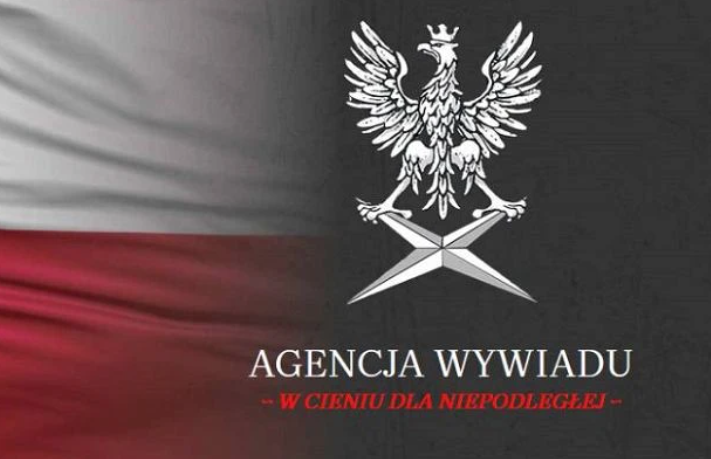I can tell you that for the first time you will read in the world media about the involvement of NATO member Poland in the attack on the Catholic Church in Istanbul.
In the last days of December 2023, a simultaneous operation was organized in 37 provinces under the coordination of the Turkish National Police’s Anti-Terror Department and Intelligence Directorate, and 189 suspects were detained in cities including Ankara, Istanbul and Izmir.
Turkish Interior Minister Ali Yerlikaya announced on January 18, 2024 that Turkish security forces had captured 36 suspects in the 3-day ‘Heroes-45’ operations against ISIS and al-Qaeda in 11 provinces. During the searches conducted during the operations, 39 thousand dollars, 11 thousand Euros, 200 thousand liras and a large amount of foreign currency belonging to other countries, as well as many digital materials and documents were seized.
- An Overview of the Current Situation in the Ukraine-Russia War
- Synagogues, monasteries, churches and masjids are places of sanctity / inviolability
Three or four days ago, an armed attack was carried out at the Convento Nativita della B.V. Maria di Büyükdere/ Latin Catholic Italian Church, run by priests of the Italian Franciscan order, in the Büyükdere neighborhood of Istanbul’s Sarıyer district.
Immediately after the incident, the security forces captured the perpetrators of the terrorist act in a short time and their nationalities were revealed, which led some to think of the Russian military intelligence GRU. According to the first reports, one of the terrorists was Tajik and the other Russian.
The Catholic Church was supporting the Kiev administration in the Orthodox Russian Federation’s war with Ukraine. In addition, the church where the terrorist attack took place could be linked to the Italian Republic, which is also pro-Kiev, due to its predominantly Italian congregation, and it was possible to create such a perception in the public opinion.
According to this line of reasoning, let me briefly talk about the relationship between the Russian military intelligence GRU and Daesh/ISIS.
Why Russian military intelligence GRU and Daesh/ISIS?…
Those who joined the ranks of Daesh from the former Soviet space were linked to the “Caucasus Emirate” and Khorasan Wilayat organizations organized in these regions. The “Caucasus Emirate” was affiliated with Al-Qaeda in the early days and was far from pledging allegiance to the Daesh leader. In the same period, those who joined the “Khorasan Emirate” were the Islamic Movement of Uzbekistan and “Islamic Jihad” groups in Central Asian countries, and the members of these groups had no difficulty in pledging allegiance to Daesh leader Abu Bakr al-Baghdadi.
Terrorist groups, including Turks from the East Turkistan Uyghur Autonomous Region, Afghanistan, Pakistan and Iran, have actively participated in the war in Syria and Iraq. According to Western sources, 2,46 terrorists from Kazakhstan, Uzbekistan, Kyrgyzstan, Turkmenistan and Tajikistan participated in the conflicts in Syria and Iraq.
In 2016, Russian sources reported that the number of fighters from the post-Soviet space who joined Daesh and Al Nusra in Syria was close to 6,000 and that fighter groups from Central Asia had joined Daesh and Al Nusra (groups known to be close to Al Qaeda) in Syria via Turkey. The reason for this information was related to the cold war between the two countries after Turkish warplanes shot down a Russian jet that violated Turkish airspace.
Turkey has blacklisted 4,128 Russian citizens since 2011 on the grounds that they have ties with DAESH. According to the statement made by the Turkish Interior Ministry, 4,128 Russian citizens were banned from entering the country on suspicion of having links with DAESH. For the same reason, 804 Russian citizens were deported from Turkey. If DAESH, ISIS, had an American, British, German, Israeli, Iranian wing, there was also a Russian wing. Let no one take us for fools! This terrorist organization had secret service agents of every European country and the United States, as well as Russian agents.
GRU / Russian Military Intelligence, Glavnoye Razvedyvatel’noye Upravleniye
Russia’s largest intelligence organization is the GRU; Glavnoye Razvedyvatel’noye Upravleniye – the military intelligence agency under the General Staff of the Russian Armed Forces. It was formerly part of the Red Army in the Soviet Union. The Russian Foreign Intelligence Service (SVR) is broadly similar to the US Central Intelligence Agency (CIA), the UK’s Secret Intelligence Service (M16) and France’s Foreign Intelligence Agency (DGSE). The Main Intelligence Directorate of the Russian Federation (GRU) is also a military foreign intelligence service, like many of its NATO counterparts.
GRU infiltrated terrorist organizations “under the guise of Muslims”…
How? On May 15, 2016, it was alleged that Russia had sent some foreigners fighting for terrorist organizations in Syria, and that Russia had released some criminals captured in the country and provided them with new identity cards and passports if they agreed to go to Syria. Among them, the number of people from the GRU, the military intelligence of the Russian Federation, was considerable. Let me tell the story of one of those exposed.
Russian Military Intelligence Officer Denis Khisamov
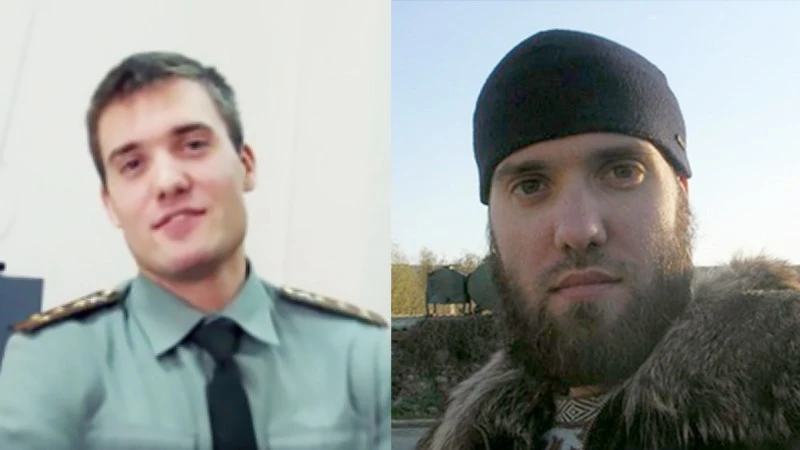
Four or five years ago, the North Caucasus Regional Military Court sentenced Denis Khisamov, a former officer in the Russian Defense Ministry who joined ISIS in Syria, to 19 years of hard labor.
Khisamov was sentenced to a year of probation and stripped of his reserve officer rank. He has other offenses. Following his previous extradition to Russia, in 2017 the Suzdal Regional Court found Denis Khisamov guilty of circulating counterfeit currency and sentenced him to three years and three months in prison.
According to the investigation, Khisamov fought alongside ISIS terrorists from January 2016 to April 2017, prior to which he had received training at a camp in Raqqa, participated in clashes in Syria, and, as of October 2016, was in charge of recruitment in Turkey.
Khisamov, who was captured in Turkey while returning from Syria in 2017, had a Tajikistan passport with him. Tajikistan, to which Turkey extradited the terrorist, later announced that the passport was fake and had been used to cross from Syria to Turkey. A month later, Khisamov, a former Russian Defense Ministry officer, was handed over to Russia.
Who is Denis Khisamov, the Russian intelligence infiltrator to Daesh/ISIS?
Denis Khisamov was born in Krasnodar on December 18, 1983 and worked as a communications and intelligence officer in the Russian Ministry of Defense. He is highly educated and holds a doctorate degree. He held the rank of captain in the Russian Ministry of Defense. One of his specialties is forging passports. In 2015, he forged a Tajik passport and crossed from Russia to Turkey.
The story of Denis Khisamov, who traveled to Syria via Turkey in 2015 to join the ISIS terrorist organization, begins when he went to Syria to escape from creditors who were chasing him in Moscow because of a delay in his bank loan payments. What a lie!
The defendant, who was indicted in 2015 for his trip to Syria and for ‘putting counterfeit money on the market’, says he received the counterfeit money from a supporter of radical ideas he met at a mosque. According to the Kommersant newspaper, Khisamov, an expert on the protection of state secrets, left his compulsory service in the Russian army in 2009 with the rank of “captain”.
He was interested in religious ideas. He went to Moscow mosques where he met with Daesh supporters. Khisamov’s new acquaintances urged him to ‘go to jihad’ in Syria. A Tajik also gave him fake 5,000 ruble notes to circulate.
Khisamov was detained in 2015 along with two others on charges of ‘assisting in the introduction of counterfeit currency into the market’ but was released on bail. Khisamov fled first to Turkey and then to Syria on a forged passport and, according to prosecutors, received help from a radical acquaintance.
From 2015 to 2016, Khisamov fought in the ranks of Daesh, participating in attacks on residential neighborhoods. In December 2016, he traveled to Turkey to bring his wife and children back to Syria and was detained by Turkish police because he was not carrying his ID card.
After his release, he obtained a fake Tajik passport and tried to travel to Tajikistan. However, he was caught by security forces at the Georgian airport and deported to Turkey. Turkish authorities decided to deport him to Tajikistan. In November 2017, Tajik authorities handed Khisamov over to Russia.
By now, you have read hundreds of these and similar nonsense-stupid stories that have been reported. The Russian Federation has naturally authorized such operations for the security of its imperial interests. But the attack on the Church in Istanbul does not bear the signature of Russian intelligence, as some people think and want us to think.
I hope that this is why they were frustrated. But it is clear that they wanted this connection to be established because of the affiliation of the captured terrorists. They wanted to put a wedge in the Ankara-Moscow rapprochement.
Some information on the church attack…
The church where the attack took place was said to be run by priests of the Italian Franciscan order. This order was founded by the Italian priest Francesco of Assisi with his followers who vowed to lead a life of poverty according to the will of Jesus Christ. Churches of this order in Turkey:
– Church of Santa Maria Draperis (Istanbul)
– St. Antuan Catholic Church (Istanbul)
– Buyukada – Church of San Pacifico (Istanbul)
– Yesilkoy – St. Stefanos Church (Istanbul)
– Mater Dolorosa Catholic Church (Samsun)
– St. Antuan Catholic Church (Izmir)
– House of Virgin Mary (Izmir)
– Terra Santa Monastery – Kendirli Church (Gaziantep)
In the attack, which was also captured on the church’s security cameras, two masked men entered the church during the service and shot and killed Tuncer Cihan. The January 28 attack was also recorded by security cameras.
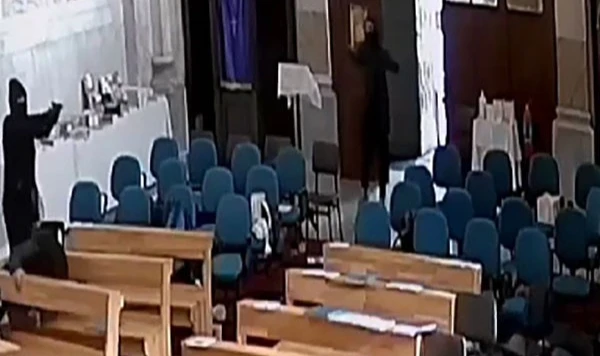
In the security camera footage, a person is seen entering after the service has begun. Before this person enters, the congregation pretends to have heard a noise. Some members of the congregation look at the door. As the person, presumably the deceased Tuncer Murat Cihan, approaches the pews to the right of the entrance, one of the attackers appears at the church door.
Meanwhile, the second attacker is probably shooting in the air. One of the attackers turns directly towards Cihan and hits or shoots him in the head. As Cihan falls to the ground, it is estimated that the attacker fires again.
The congregation leaves the church in panic. Some parishioners hide under the pews. While one of the attackers continues to wait at the door, the second attacker comes to the middle of the pews. This attacker gestures as if his weapon is jammed. The second attacker, standing near the door, drops something on the floor and picks it up. After a while, the two attackers leave the church.
Terror victim, homeless Turkish citizen…
Tuncer Murat Cihan, 52-year-old Tuncer Murat Cihan, homeless and poor, was killed in an armed attack at the Latin Catholic Church Santa Maria Italian Church in the Büyükdere neighborhood of Istanbul’s Sarıyer district, according to foreign media.
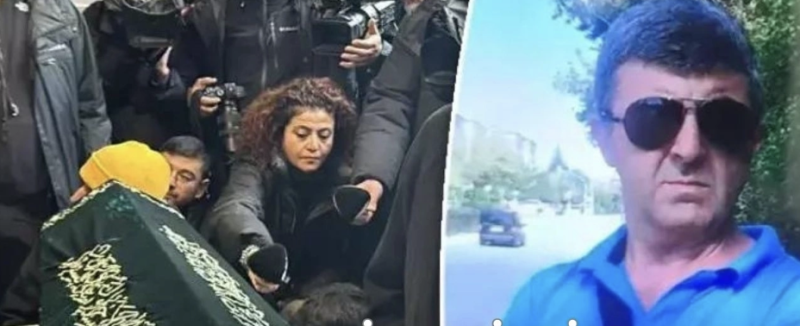
Relatives say that the deceased Tuncer Cihan went to the church to visit and spend time. The ceremony held at Nurtepe Cemevi for Tuncer Murat Cihan, an Alevi Muslim with an 80 percent disability report, was attended by Ekrem İmamoğlu, Mayor of Istanbul Metropolitan Municipality (IBB), Massimiliano Palinuro, Spiritual Head of the Latin Catholic Community, Kağıthane District Governor Niyazi Erten, Cihan’s family and relatives. Cihan’s body was buried in Hasdal Cemetery after the ceremony.
Details covered up that were not published in the Polish press!…
Although the congregation of this church is predominantly Italian, the fact that the Polish Consul General in Istanbul, Witold Leśniak, and his children were also there is a puzzling fact. The diplomat graduated from the University of Wrocław in Poland and then studied at the Freie Universität in Berlin on a scholarship. He worked at the Stiftung Kreisau für Europäische Verständigung /Krzyżowa” Foundation for European Understanding, which was founded by Germans, Poles, Dutch and Americans.
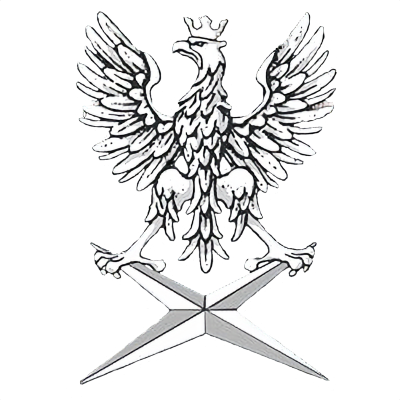
He was also a front for the Polish Foreign Intelligence Agency Agencja Wywiadu, and was assigned on different dates to Berlin, Cairo, Istanbul and Ankara by the National Institute of Remembrance – Commission for the Prosecution of Crimes against the Polish Nation, established on 19 January 1999 in accordance with the Law of 18 December 1998.
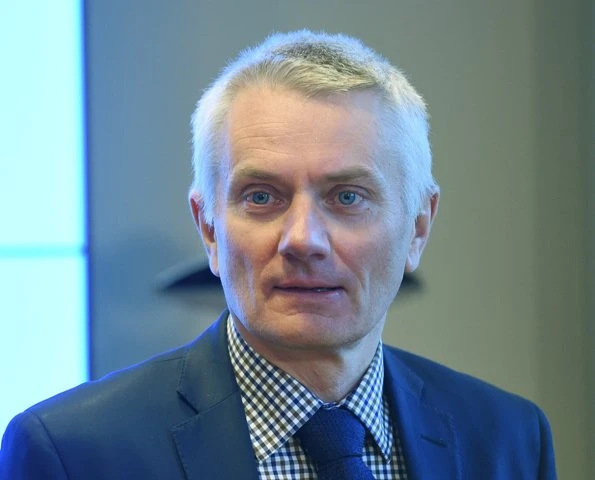
It can be said that he was in contact with Brigadier General Maciej Hunia, the head of Agencja Wywiadu.
In Turkish, he is an intelligence officer disguised as a diplomat, as is the case all over the world. If MIT determines that he was involved in the terrorist act against the Church, he should be declared “Persona non grata” by the Ministry of Foreign Affairs.
Now that the number of people detained in connection with the armed attack has risen to 51 and they have been identified as citizens of Tajikistan, Russia and Turkey, the security bureaucracy is making a big deal out of it.
How can it not be magnified?
The vehicle used by the suspects in the incident was brought to Turkey from Poland a year ago and had never been on the road during that time. Coincidentally, the Consul General of Poland in Istanbul, Witold Leśniak, his wife and children were present at the scene when the terrorists arrived at the church.
For some reason, A.K. from Tajikistan and D.T. from Russia left the church after the gun jammed after firing a second time. Let them explain this to my cone. How can you come to such an action with a “pistol from the Prophet Noah”?
It is clearly visible in the camera recordings that they were both armed. There is only one person who lost his life in the terrorist act, and he was not a member of the Church community, but an Alevi Muslim Turkish citizen. The deceased was old, poor, retired and disabled.
Twenty-three of the detained suspects were handed over to a repatriation center for deportation. After Interior Minister Ali Yerlikaya’s statement “We are evaluating that these two foreign nationals, one from Tajikistan and the other from Russia, are ISIS members.” ISIS claimed responsibility for the attack with a post on its Telegram channel.
The 2017 Istanbul nightclub attack, or Reina massacre, was carried out by an ISIS militant of Uzbek origin, Abdulkadir Mashapirov, who had been in Turkey since 2011.
President Erdoğan met with the consul general…
President Erdoğan had a telephone conversation with Anton Bulai, Priest of the Italian Church of Santa Maria and Witold Lesniak, Consul General of Poland in Istanbul, who was attending Sunday mass at the Church with his wife and children at the time of the attack.
Whose church is this church, because the Italian press says ‘what do we care?
As is usually the case, in the aftermath of the heinous shooting, false or inflated information was served with the urge to make a different news story. As if it was very important, it was written that Santa Maria was the name of the sailing ship used by Christopher Columbus when he discovered America, that ‘Santa Maria’, which is also the name of a town in Sardinia, Italy, means “Holy Mary” for Christians, i.e. the name of the mother of Jesus Christ.
However, it was particularly interesting for me that some Italian media outlets covered the attack on the Church with an analysis that stated that it was none of the Italian government’s business.
In short, some media outlets have identified the church with the famous Santa Maria Draperis (Latin Catholic Church of Our Lady of Draperis), but this comparison is incorrect.
Accordingly, both are associated with Italy for historical reasons dating back to the Ottoman period.
Located on Istiklal Street in Beyoglu, Istanbul, this church, built in 1584, is one of the oldest active churches in Istanbul. It is known to be under the control of the Franciscans.
“Neither the Sarıyer/Büyükdere Church nor the other large and historic church of the same name in Beyoğlu are in fact officially and administratively affiliated to the Italian Community of Istanbul, and have no ties with the Italian Republic/Repubblica Italiana, nor are they officially of any concern to any institution of the Italian Republic,” the Italian media says.
The fact that Italian Foreign Minister Antonio Tajani also expressed his “condolences and strong condemnation” of the attack and supported the Turkish authorities in their search for the killers is purely political. Moreover, this terrorist act has nothing to do with the visit of Italian Prime Minister Giorgia Meloni to Turkey and her meeting with President Erdoğan. In other words, the heinous terror did not target the rapprochement between Ankara and Rome.
Cardinal Matteo Zuppi, appointed by Pope Francis as president of the Italian Bishops’ Conference CEI to replace the outgoing Archbishop of Perugia-Città della Pieve, Cardinal Gualtiero Bassetti, and its secretary general, Monsignor Giuseppe Baturi, To Monsignor Massimiliano Palinuro, Apostolic Vicar of Constantinople and Apostolic Administrator of the Byzantine Exarchate in Turkey, the President and Secretary of CEI expressed the solidarity and closeness of the Churches in Italy.
What are the implications of such a bloody act for the reconstruction of Turkey?
1. Those who are disturbed by the Turkish Armed Forces’ operations in Northern Iraq…
Commenting on the attack on the church, İsmail Hakkı Pekin, former chief of intelligence of the General Staff, said: “Attacks will continue until the elections, things will slowly escalate.”
Pointing out that similar attacks could happen in the coming period after ISIS claimed responsibility for the attack, Pekin said, “The issue of embassies and shrines in Turkey not being protected may come to the agenda. It could also be a move to pave the way for Turkey in the fight against ISIS.
Turkey’s activities against ISIS may be brought to the agenda. We need to look at who made ISIS carry out this attack. The attack may also be a message to Turkey: ‘You are carrying out some actions in northern Iraq, but there are terrorists in your own country, you need to take care of them’.”
2. The country’s attitude towards Russia and Palestine.
If the suspects were Russian and Tajik citizens, as it appears they were, and if they considered themselves to be involved, the question would be who was the provocateur at such a sensitive moment: Turkey sided with Russia. The Russian Federation supports Palestine after Israel’s reaction to the events of last November.
Simultaneously with the attack, US Undersecretary of State Victoria Nuland was meeting with Turkish Foreign Minister Hakan Fidan in Ankara. The Ministry’s website does not even disclose the subject of the meeting. I wonder what was discussed?
3. Relations with the Papacy…
Relations between the Republic of Turkey and the Vatican are historically particularly delicate. In the Cathedral of Constantinople, there is an Ottoman-era statue commissioned by the sultan of the time to thank Benedict XV for his commitment to free Turkish prisoners of war after the Great War.
John XXIII was Apostolic Nuncio in Turkey at the dawn of the Republic. It was a Turkish citizen who shot John Paul II. Whatever the real instigators of the attack in St. Peter’s Square, the attitude of the Turkish far right (Turkish-Islamic synthesis) towards Catholicism and Papal authority is well known. The attacker in St. Peter’s Square was a subsidiary of their political party and its adherents have an important role in Turkey’s current government.
The result is that the incident is a secret service affair and the instigator is obvious.
Selected Bibliography
https://ipn.gov.pl/
https://www.krzyzowa.pl/pl/
https://ria.ru/20240128/napadenie-1923960240.html
http://www.katolikkilisesi.org/en/mariedraperis.html
https://www.gov.pl/web/turcja/konsul-generalny-w-stambule
https://www.reuters.com/article/us-turkey-attack-idUSKBN14M0CJ/
https://www.chiesadimilano.it/news/attualita/istanbul-chiesa-colpita-2792619.html
https://sputniknews.com.tr/20240128/istanbulda-kiliseye-saldiri-1080117474.html
https://www.politikyol.com/11-ilde-isid-ve-el-kaideye-operasyon-36-supheli-yakalandi/
https://radio.lublin.pl/2024/01/turcja-w-czasie-ataku-w-kosciele-obecny-byl-polski-konsul/
https://www.agos.com.tr/tr/yazi/29745/kilise-saldirisinda-oldurulen-tuncer-cihan-topraga-verildi
https://www.cnnturk.com/turkiye/son-dakika-reutersin-iddiasina-gore-reina-saldirisini-deas-ustlendi
https://www.odatv4.com/guncel/trabzon-ve-istanbulda-kilise-saldirilari-santa-marianin-sirri-120024790
https://www.rmf24.pl/fakty/swiat/news-zamachowcy-zaatakowali-wloski-kosciol-w-stambule,nId,7297144
https://www.pap.pl/aktualnosci/zlapano-zamachowcow-z-kosciola-w-stambule-wzielo-odpowiedzialnosc-za-atak
https://www.pap.pl/aktualnosci/zamach-w-stambule-we-mszy-uczestniczyl-polski-konsul-msz-dyplomata-i-jego-rodzina-sa
https://www.rp.pl/przestepczosc/art39751211-atak-na-kosciol-w-stambule-napastnicy-weszli-z-bronia-w-czasie-mszy-wideo
https://www.vaticannews.va/en/church/news/2022-05/cardinal-zuppi-new-president-of-italian-episcopal-conference.html
https://www.politikyol.com/korkutan-uyari-turkiyedeki-isidliler-toparlandi-benzer-saldirilar-secime-kadar-devam-edecek/
http://www.aw.gov.pl/eng/agencja/przedmiot-dzialania-agencji.html
https://www.dikgazete.com/yazi/italyan-meloni-den-erdogan-a-gocmen-melodisi-6475.html
https://polskienowiny.pl/swiat/stambul-polski-konsul-byl-z-dziecmi-w-tureckim-kosciele-gdy-doszlo-do-ataku-zlapano-sprawcow/
https://www.fanpage.it/esteri/attacco-armato-contro-chiesa-italiana-a-istanbul-durante-la-messa-1-morto-e-diversi-feriti/
https://www.ntv.com.tr/turkiye/kilisede-silahli-saldiri-ayin-sirasinda-bir-kisi-olduruldu-47-gozalti, MpecgYBUtkeWtu-kKs1nsg
https://www.agenzianova.com/ru/news/attacco-armato-in-una-chiesa-cattolica-italiana-di-istanbul-morto-un-cittadino-turco-di-52-anni/
https://wiadomosci.gazeta.pl/wiadomosci/7,114881,30641735,stambul-w-czasie-ataku-w-tureckim-kosciele-obecny-byl-polski.html
https://www.dikgazete.com/yazi/rus-askeri-istihbarati-gru-atlantikci-dinci-teror-orgutu-daes-iside-nasil-sizdi-makale,1317.html-1317.html
https://www.ansa.it/sito/notizie/mondo/asia/2024/01/28/attacco-a-una-chiesa-italiana-a-istanbul-un-morto_7180d185-0d24-45ba-bd26-920e0a453c77.html
https://www.geopolitica.info/attacco-alla-chiesa-di-s-maria-ad-istanbul-ma-non-e-la-chiesa-italiana-nello-stesso-momento-ad-ankara-il-sottosegretario-di-stato-usa-incontrava-il-ministro-degli-affari/

